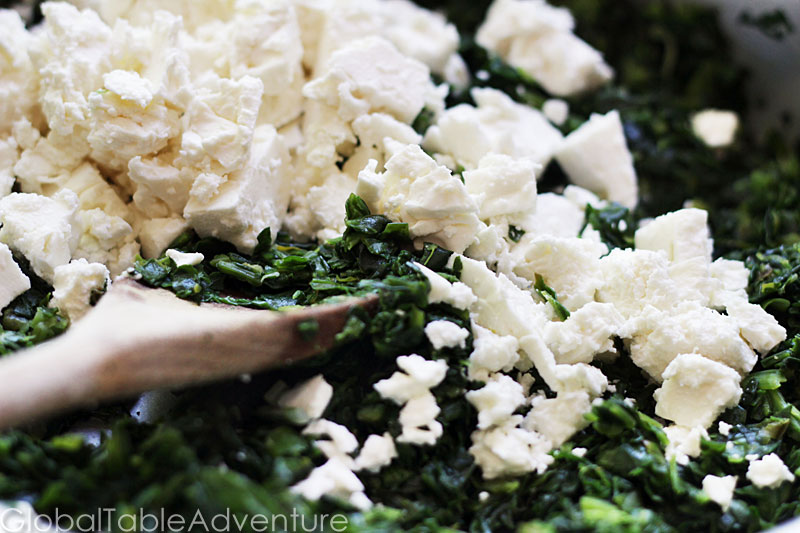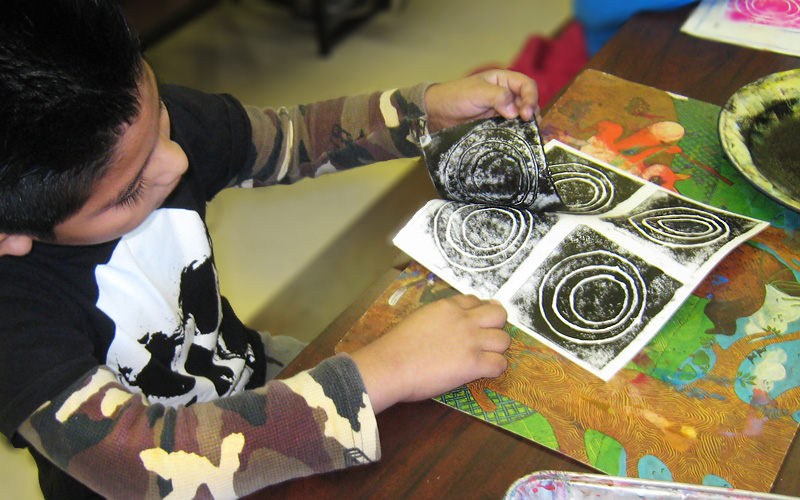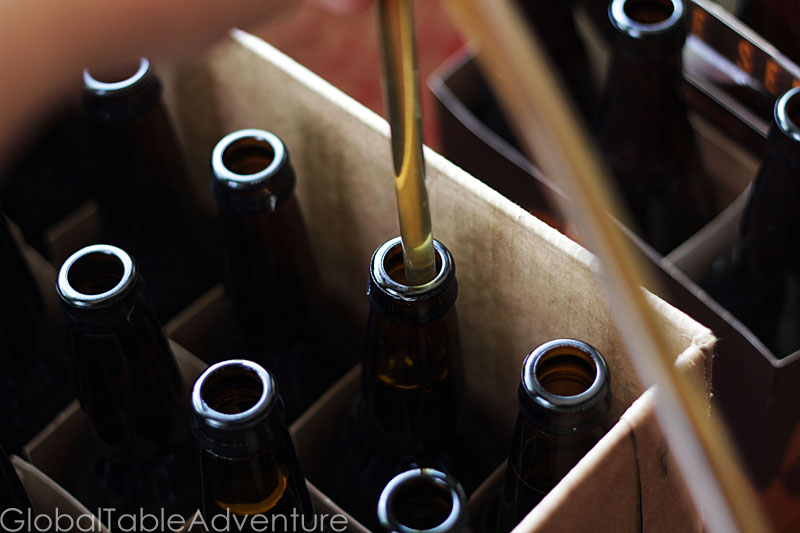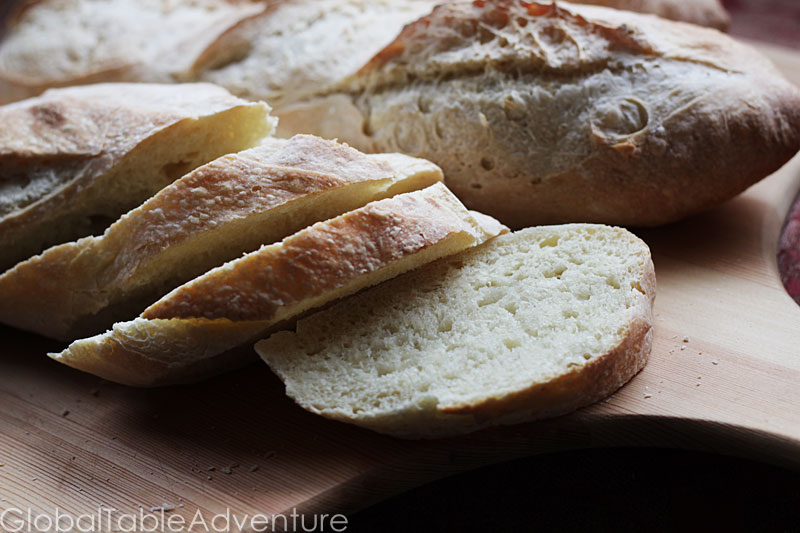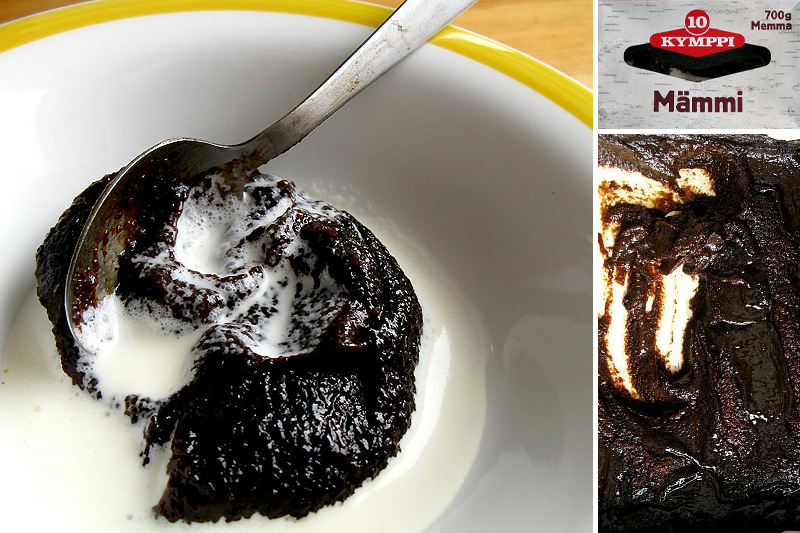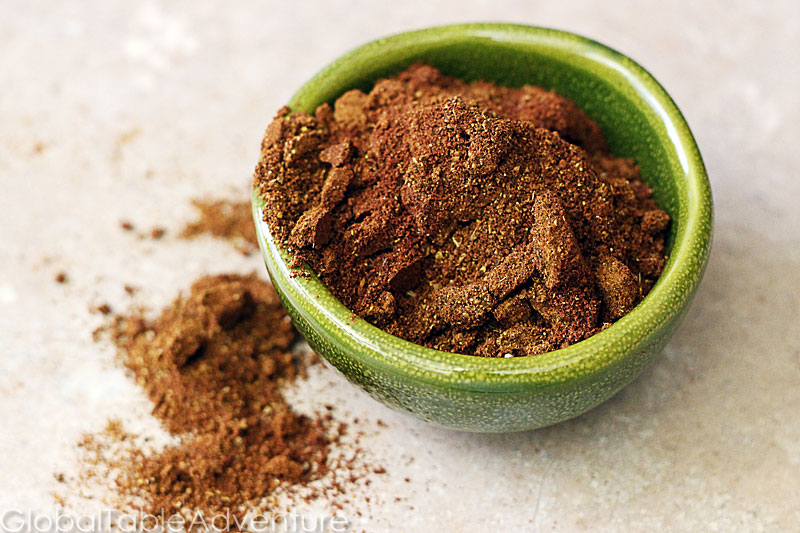You wouldn’t know it by looking at them, but the Greeks love cheese almost as much as the air they breathe. They are seriously cheesy. So cheesy, in fact… well… let’s see if you can follow this: The average Greek woman weighs somewhere around 60 kg. The average Greek eats 25 kg of cheese per year. Therefore, we can safely conclude that the average Greek woman eats almost half her weight in cheese every year (just over 40%). Epic. I must move to Greece immediately and catch up for lost time. If you don’t believe me, read Lonely Planet Greece, where they clearly state that Greeks are so cheesy they “consume more cheese per capita than any other country in the world.” So what cheese does the cheesiest country in the world favor? The most beloved cheese in Greece is Feta – a salty, dry cheese made with goat or sheep’s milk. In fact, it is known as the National cheese of Greece. We’ve already featured feta in our Spanakopita recipe and will also feature it in …
Read More
My sister, Elisa, has one of the coolest jobs in the world. She’s an art teacher. In the days when I was languishing at my desk job, I dreamed of being in her shoes – inspiring children, encouraging creativity, playing with paint, and being called “Ms. Foppiano.” (That’s my maiden name. I really like it, although I don’t miss spelling it for people: “F as in Frank, O, double P as in Paul, I, A, N as in Nancy, O.” What a drag.) Today, I simply dream of Elisa taking over as Ava’s personal finger paint instructor. Oh, the fun they would have. Elisa recently did a Ghanaian art project with her students. Adinkra, or pattern stamping, is traditional with the Asante people of Ghana. They stamp patterns on cloth with a calabash shell and then wear the special cloth for different occasions. If the cloth is black or red, the adinkra is worn at funerals and big departures. If the cloth is brightly colored, the adinkra can be worn any time, but most commonly on Sunday …
Read More
I know very little about beer. So little, in fact, that I’ve been known to drink it on ice. While I’ve been told this is an epic sin, I can’t help myself. There’s nothing better after a hot, sweaty bike ride in the summer than beer on ice. That being said, I thought our German Global Table was the perfect opportunity to take a stab at homebrewing. This is my step-by-step eperience making German Altbier. I am using the Brewer’s Best kit which can be purchased at High Gravity in Tulsa, Oklahoma (you can also order from them online). If you purchase their kit, you’ll get the full instructions and my procedure might help along the way. At the very least, you’ll learn what not to do. They also have classes. This isn’t an ad, by the way. I bought my own kit. High Gravity did loan me a bucket though! Hurrah for that. Now… if I can just get over there to return it. Day 1: First lesson… Apparently one needs a giant pot …
Read More
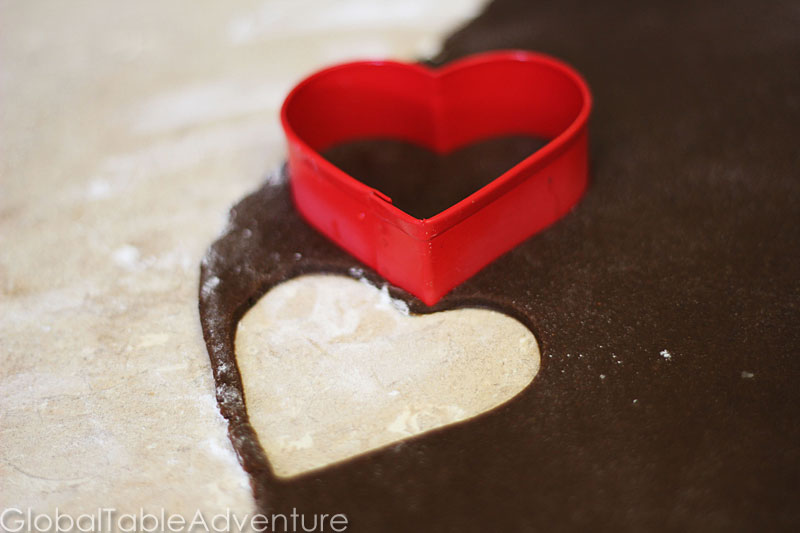
Pull up your chair to the German dinner table and you’ll likely eat a heaping plate of meat and potatoes. You might even encounter a crunchy gingersnap or a soft, spicy gingerbread cookie [Recipe]. What you might not expect, however, is that your cookies could be in your meat dish. That’s right. The German dish called Sauerbraten is a slow-cooked pot roast, loaded up with vinegar and a rich, brown gravy thickened with nothing more than cookies. But let’s start at the beginning, shall we? First, the meat hangs out in a vinegar bath for a week and a half, along with a healthy sprinkle of pickling spices. Second, the meat is slow-cooked with the vinegar mixture in a hot oven. Third, the vinegar mixture is strained and simmered with finely crushed gingersnaps to make a spicy, tangy brown gravy. Amazing. I must eat this dish as soon as possible. What about you? Would you try it? Happy Fun Fact Friday! Have a great weekend… hope you have something fun planned. Photo of Sauerbraten: Johann …
Read More
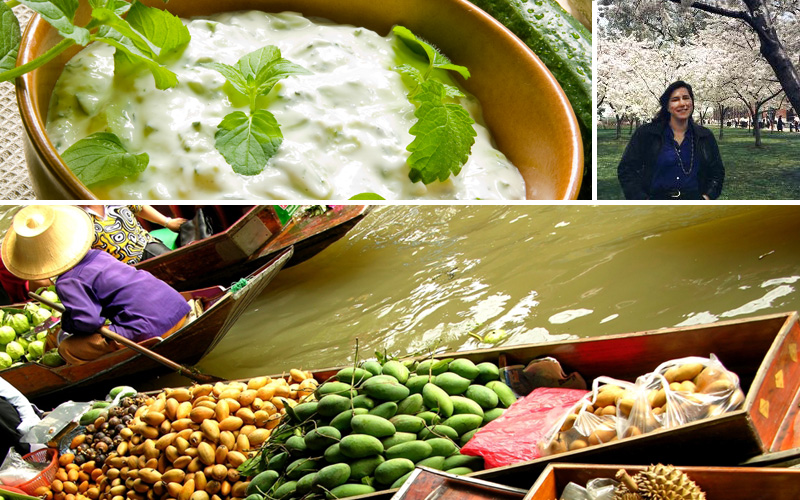
Today I’d like to introduce you to author Laura Kelley. For the last year I’ve happily enjoyed her blog The Silk Road Gourmet, where she pens the most fascinating articles. Curious about the history and traditions associated with Valentine’s Day? She’ll tell you. Want to check out a cauldron of 2,400 year-old soup? Sure thing. Finally, what if a scientist went out to eat and realizes the food on their plate is a new species? She shares the story. This Harvard alumnus knows her stuff. When it came to this week’s culinary adventure into Georgia (not the place where Paula Deen lives), Laura was instrumental – her book, The Silk Road Gourmet: Volume One: Western and Southern Asia, was the jumping off point for 3 of our recipes. The instructions are clear, the writing is vivid, and the final dishes came out impeccably. Long story short, Laura is a powerhouse of knowledge when it comes to all things “Silk Road.” What does that mean? You’ll just have to read her answer to my first question. What does the …
Read More
I know it’s springtime and I’m supposed to be nibbling lettuce, trying on my bathing suit five times a day, and sipping nothing but water. Life doesn’t always work out like that. Last night, for example, I was in huddled in the closet with Miss Ava. That’s right – my noisy almost-two-year-old and I were waiting out two rounds of tornado sirens. It was chaos. Fearing for my life makes me crave comfort food. If you are surviving on lettuce and water, please forgive me for this post. You might wait a day to try on your bathing suit. I thought I’d heard it all when it came to baguette sandwiches. I was wrong. Here are two West African sandwiches that I would gladly eat while hiding from a tornado: The Omelet This one is pretty straight forward, but about as decadent as it gets: a deep-fried omelet laid across a baguette. It’s sold at the tanganas, or street food shacks, that you can find along dusty dirt roads in the Gambia. For those of you …
Read More
Ever think to your hungry self “I could really go for a giant, roly-poly, tree-climbing, toothless anteater with scales, right about now?” Me neither. But in Gabon it happens. Meet the pangolin. In the old days, before extinction was a very real threat, pangolin was considered top notch bush meat – great for beefing up stews and slathering with spicy sauces. The only catch is, once this delightful animal rolls up into a ball, even lions cannot break through the scales to get a nibble. Nice. The scales are supposedly strong enough for armor. Just ask King George III – if you have a time machine handy (anyone friends with the Doctor?). Happy Fun Fact Friday! Photos: Joxerra Aihartza, Piekfrosch, Pangolin Waking Up, Acid Cow
Read More
Do you want to tell someone you love them in French? “Je t’aime.” Do you want to tell someone you like them in French? “Je t’aime.” It gets confusing when you’re a geeked out adolescent, trying not to sound too eager when talking about the cute guy in your class. It matters less when talking about food. Or family. In fact, the French language has an important message for all of us. We shouldn’t just love our loved ones. We should like them, too. Makes sense to me.
Read More
Finns greet Easter with a goopy, black as tar dish called mämmi. If that’s not enough to entice you, let me see if I can adequately describe the flavor. It’s been described as a cross between Guinness and shoe paste. Even with such a distinct look and taste, mämmi is a tradition held seriously enough to warrant protection from the European Union. Making mämmi is no joke – first you mix rye flour with bitter orange peel, a hint of sweetener, and a few other ingredients. Boiling water gets mixed in and you slowly bake it in a warm oven. Slowly… as in for three hours. Then it has to be whipped until cool. Then it has to sit for a few days. I think there’s some repetition of steps in there somewhere. Finally, and most commonly, it gets served with a splash of cream and a bit of sugar. Phew. If grandma goes to the trouble to make you a batch of mämmi, you had better eat it with a smile – goup and …
Read More

Do you ever, in the midst of clipping your fingernails, start wondering about the meaning of life? Do you ever, while tweezing those stray hairs, start wondering “who am I, anyway?” Do you ever, while watching a movie, start thinking about what food your soul might be made up of? The other night we watched “Cold Souls,” an offbeat film about the possibility of removing the soul and freezing it until needed again. The main character (played by Paul Giamatti) extracts his soul only to find out it looks exactly like a chickpea. A chickpea. It made me laugh. Then, rather abruptly, I stopped laughing. “Wait a minute,” I thought “What food might mine be made of?” A flood of possibilities crossed my mind- basically my favorite foods – but none seemed suitable. Basalmic vinegar is too tart and runny, artichokes are too prickly at heart, garlic is too stinky. I simply couldn’t decide. Fiji’s Answer One look at Fiji’s flag and I could tell – they’ve already figured out their answer. But they didn’t …
Read More
If one must eat meat raw it is surely best done in this way, for the sauce gives the impression of being hot enough to cook the meat right on the tongue. – Laurens Van Der Post (as quoted in Ethiopia, Cultures of the World by Steven Gish, Winnie Thai, and Zawiah Latif) Van Der Post is talking about an Ethiopian raw beef dish called kitfo (kit-foh). The sauce is made almost entirely of berberé – the crazy, smoke alarm hot spice blend we made recently – as well as lemon juice and a buttery-good mixture of sautéed peppers, onions, ginger, garlic, and cardamom. And, of course, raw beef. Now, for the moment of truth… would you eat it? Why or why not? Photo: Diádoco
Read More

Coffee is said to have originated in Ethiopia. Today Ethiopian coffee ceremonies are common after large meals, even at restaurants. Women will roast beans in front of the guests. Then she’ll grind the beans, perfuming the room, and brew them in a clay coffee pot, or jebena. The coffee is served in small cups called si’ni. Diners have their choice of salt or sugar. Traditionally, every guest is offered 3 cupfuls- the same grounds being brewed each time, making each consecutive cup weaker. My Rendition At best, I was ill-prepared to perform an Ethiopian coffee ceremony. #1, I live in Tulsa, Oklahoma. #2, I lack every single piece of traditional Ethiopian coffee-making equipment there could possibly be. In fact, the only proper element I have is a bag of green coffee beans. Tilda’s parents brought them all the way over from Ethiopia, known as the birthplace of coffee. At least the coffee was right. I got to work, putting my college nickname “MacGyver” to good use. What follows are the results of a free-spirited, improvisational coffee …
Read More

